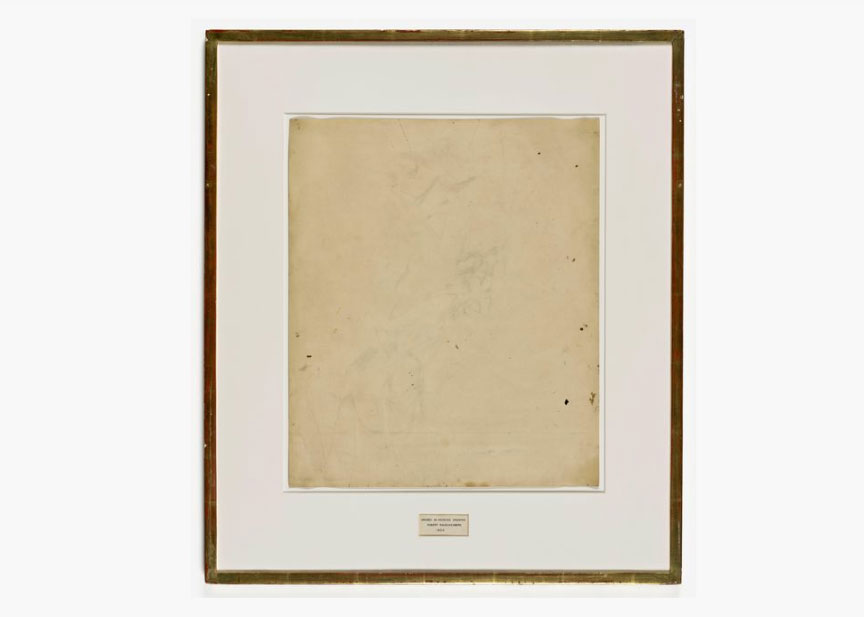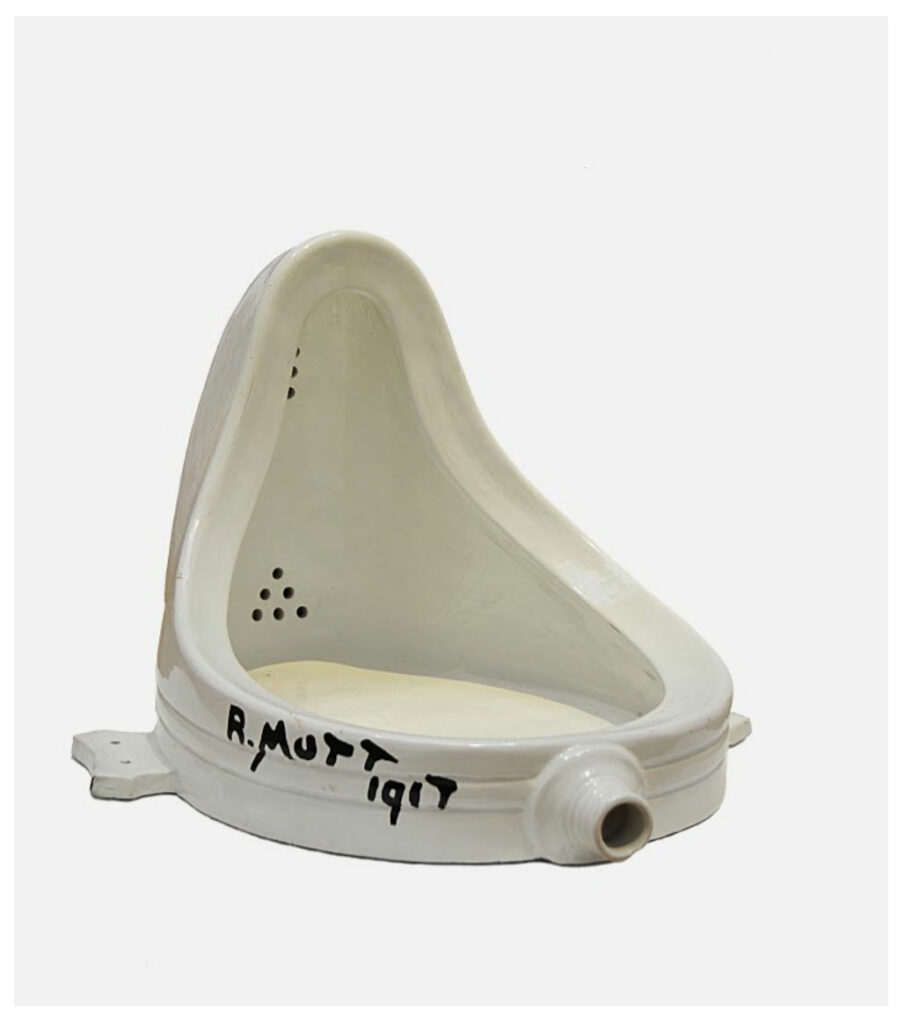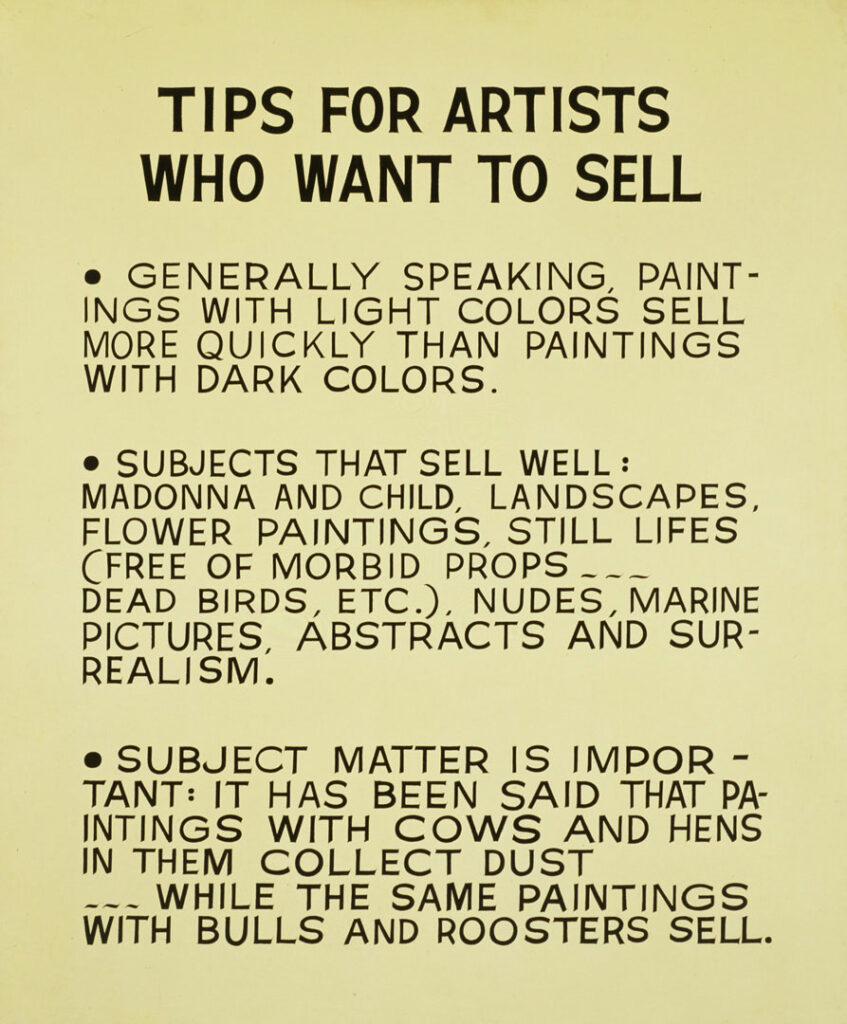What is Conceptual Art? Overview with Examples

Conceptual art strives to break the conventional notions of traditional art. It subscribes to the value that the concept or idea is more important than the art object. Conceptual art embraces everyday objects and ready-made things to convey ideas and commentary on society or social norms.
By understanding what conceptual art is, its purpose, and its examples, you’ll have a greater appreciation for the art style and its motivation to break from tradition. Controversial by nature, conceptual art seeks to challenge art norms. Appreciation can grow for conceptual art as one’s understanding of the artist’s message and practice grows.
What is Conceptual Art?
Conceptual Art is an Anglo-American art movement from the 1960s to 1970s. Conceptualism puts more emphasis on artists’ ideas or concepts for the art rather than their technical skills or aesthetics. Conceptual art is one of the reasons why modern art ended at that time in history and contemporary art takes over as a new paradigm shift. Conceptual art was part of the paradigm shift about what qualifies as art.
To create conceptual art, artists used eclectic and unconventional materials to convey their ideas, exploring art as an idea or knowledge as opposed to traditional art mediums. Their art could look like anything:
- Performance
- Writing
- Sound
- Action
- Everyday objects

Key Characteristics of Conceptual Art
There are some distinguishing key characteristics of conceptual art:
- Minimalist unconventional materials, creating a dematerialization of art
- Art is an idea or concept as the driving aspect more than traditional art skill
- Emphasis on expression or commentary on cultural values or society
- Self-referential
- Avant-garde
What Was Conceptual Art a Response To?
Like many things in the 1960s, conceptual art was a response and rejection of art critic Clement Greenberg’s commitment to formalism and art that was restricted to a flat surface. It disrupted abstract expressionism. Conceptual art broke the boundaries of what could be considered art.
Do you enjoy conceptual and modern art? Visit our gallery to see the works of influential Southern Californian artists.
Related Link: Installation: Depending on Your Perspective by Richard Becker
History of Conceptual Art
While Conceptual Art is defined as a period during the 1960 and 1970s, it got its roots much earlier.
The Father of Conceptual Art
Conceptual Art originated in 1917 when Marcel Duchamp submitted a urinal (a “ready-made” object) as a sculpture at a New York exhibition. His work was rejected, but his critique of the art world opened the door for conceptual art.
The Fluxus Movement
It wouldn’t be until the 1960s, during the Fluxus movement, that conceptual art began to take shape, challenging art conventions and foundations by broadening the range of what art could be. Fluxus artists pushed the boundaries of the art aesthetic to be anything.
Breaking Free of Modernism
In the early 1960s, Frank Stella challenged the rules of Modernism by creating a Black Paintings series that moved art from the canvas into a three-dimensional anti-form, where art became an idea or action rather than traditional mediums. Many artists during this time embraced this new art paradigm.
And in 1963, Henry Flynt defined concept art in an article he wrote for a proto-Fluxus publication, An Anthology of Chance Operations. He asserted that concept art must critique logic or mathematics.
Do you enjoy contemporary art that evokes emotion and strong themes? Come see our current exhibitions of prominent Southern Californian artists.
Related Link: Q & A With Anna Stump
Image Source: https://www.theartstory.org/artist/baldessari-john/
Noteworthy Conceptual Art Artists & Their Work
John Baldessari’s Tips For Artists Who Want to Sell
John Baldessari was a painter and photographer who embraced conceptualism. He found a flyer listing advice for artists while teaching a class at the University of California. He used the flyer as conceptual art to illustrate the cynical ploys behind great art.
Joseph Beuys’s How to Explain Pictures to a Dead Hare
A sculptor and performing artist, Joseph Beuys, wrapped his foot in the cradling of a recently deceased rabbit. Using the rabbit as his medium suggested art’s healing potential for those seeking self-revitalization and hope for the future.
Sol LeWitt’s Buried Cube Containing an Object of Importance but Little Value
Sol LeWitt, who was the main theorist of conceptual art, said, “ Ideas alone can be works of art; they are in a chain of development that may eventually find some form. All ideas need not be made physical.” His burial of a cube was an art piece, but a series of photos documented the conceptual process.
Robert Rauschenberg’s Canyon
Robert Rauschenberg was a painter, graphic artist, and collagist who loved to blend materials and methods. Canyon is his most iconic and controversial piece because it combines pieces of wood, a mirror, a taxidermy bald eagle, and a pillow. For some, it represented imagery of nationalism disguised as McCarthyism. However, Rauschenberg preferred to leave interpretation up to the viewer.
Yves Klein’s Le Saut dans le Vide (Leap into the Void)
A French painter, Yves Klein was a controversial artist who was known for his single-color use of ultramarine. Leap into the Void is a photomontage depicting his falling body onto an image of a street. The image shows his attempt to defy gravity and his attitude toward artistic evocations.
Christo’s Iron Curtain
In 1962, Christo created a barricade using oil barrels on a narrow Paris street, which caused a significant traffic jam. Iron Curtain wasn’t the barricade, but the artwork was the ensuing traffic jam.
Douglas Huebler’s Compilation of Secrets
In 1970, Douglas Huebler had museum visitors write “one authentic secret.” He compiled the 1800 secrets into a book. While a fascinating concept, the book isn’t a compelling read because most people have the same secrets.
Conceptual Art Continues to Influence
While some may find conceptual art distasteful, shocking, or lacking talent, it does provoke thought and reaction. It breaks the boundaries of traditional art and stretches as far as your imagination can allow. Love it or hate it, conceptualism has influenced artists and put emphasis on the power of an idea.
Sparks Gallery celebrates the contemporary artwork of innovative Southern Californian artists. We curate emotive works that represent important themes. We showcase pieces from the surreal, figurative, and conceptual. Come to our gallery to experience excellent craftsmanship and unique points of view.
Related Link: Installation: Inverse by Sage Serrano



